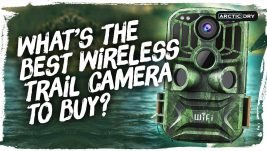The Best Binoculars for Bird Watching UK
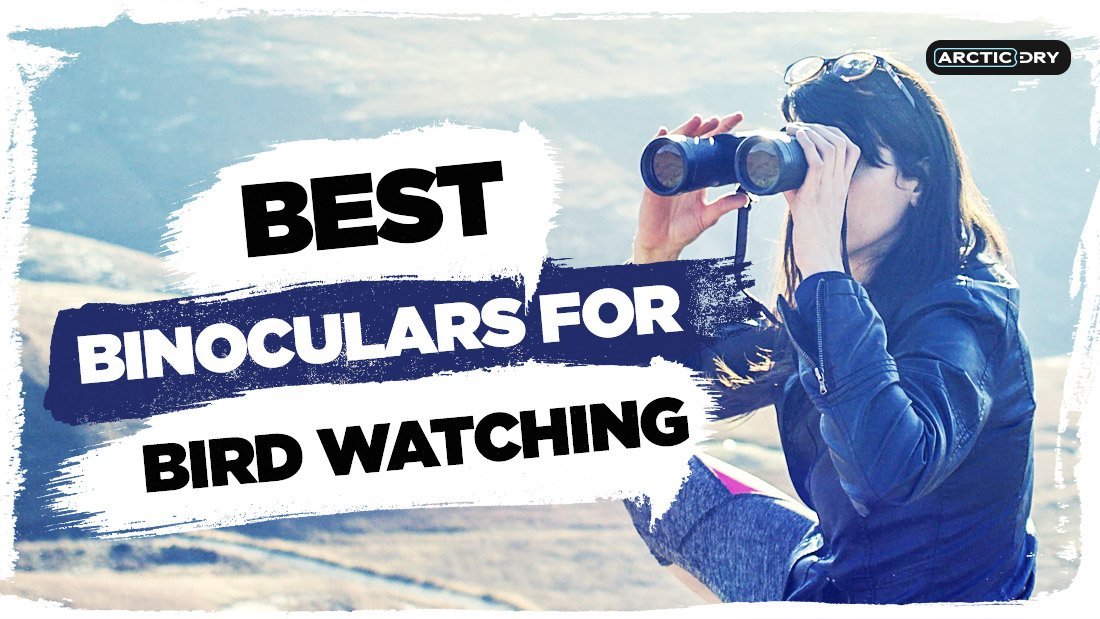
| Best binoculars for bird watching uk | Price | Rating | View |
|---|---|---|---|
| Nikon Aculon A30 10x25 Binoculars | £59.00 | 4.5 / 5 | View |
| Celestron 71406 TrailSeeker 10 x 42 Binocular | £169.00 | 4.5 / 5 | View |
| Steiner Wildlife XP 8x24 Binoculars | £186.99 | 4.5 / 5 | View |
| Nikon Monarch 7 8X42 DCF Binoculars | £459 | 4 / 5 | View |
| Nikon Prostaff 7S 8x42 Binocular | £179 | 4 / 5 | View |
| Nikon Monarch HG 10 x 42 Binoculars | £949 | 4.5 / 5 | View |
| Steiner Safari UltraSharp 10x26 binoculars | £99 | 4.5 / 5 | View |
| Nikon EDG 7x42 Black binocular | £715 | 5 / 5 | View |
| Canon 10X32 IS Binoculars | £706.99 | 5 / 5 | View |
| Swarovski 8.5 x 42 Field Pro EL Swarovison binoculars | £1,649.00 | 4.5/5 | View |
Whether you are a professional bird watcher who travels the world to discover all sorts of wildlife while out hiking or a hobbyist who likes to watch the neighbourhood robins from your backyard, a set of binoculars is the most critical tool you can get! To get the most out of your bird watching profession or hobby, you can’t make compromises when it comes to finding the right type of binoculars.
The only problem is that shopping for binoculars can turn into a wild goose chase, especially if you have no prior experience with them.
There is just too much spec jargon and numbers to deal with; it can be nerve-wracking just thinking about it. Not to mention that you have to choose from a sea of brands that have flooded the market.
But you need not go through all the trouble! In this post, we want to help you out by shining a light on some of the best binoculars for bird watching UK. Continue reading to learn more!
Contents
Best Binoculars for Bird Watching UK – Guide
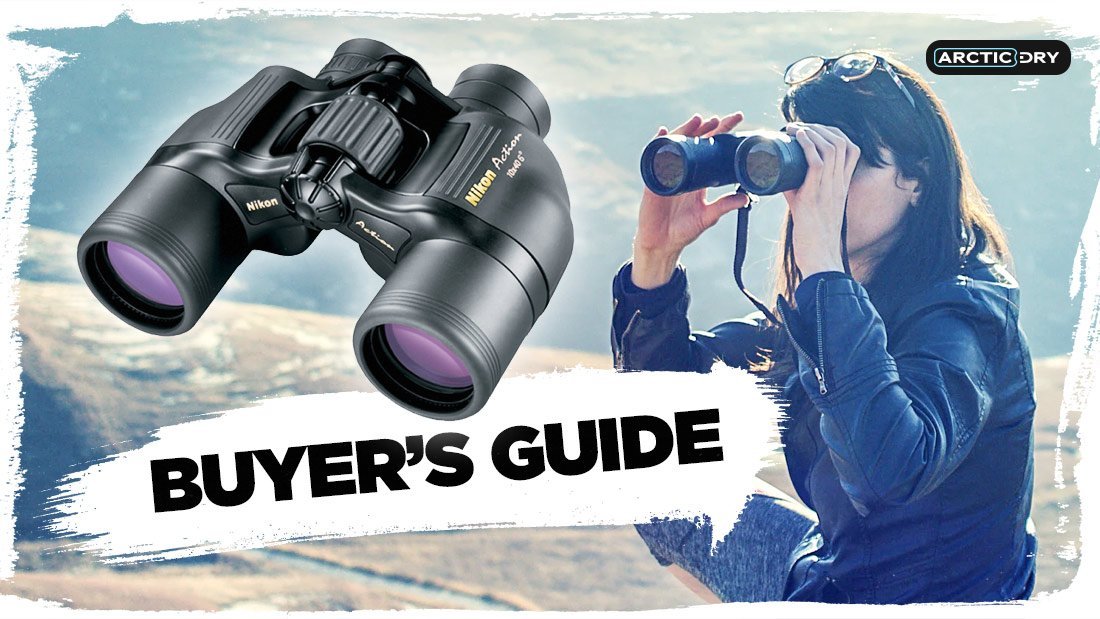
| Best binoculars for bird watching uk | Price | Rating | View |
|---|---|---|---|
| Nikon Aculon A30 10x25 Binoculars | £59.00 | 4.5 / 5 | View |
| Celestron 71406 TrailSeeker 10 x 42 Binocular | £169.00 | 4.5 / 5 | View |
| Steiner Wildlife XP 8x24 Binoculars | £186.99 | 4.5 / 5 | View |
| Nikon Monarch 7 8X42 DCF Binoculars | £459 | 4 / 5 | View |
| Nikon Prostaff 7S 8x42 Binocular | £179 | 4 / 5 | View |
| Nikon Monarch HG 10 x 42 Binoculars | £949 | 4.5 / 5 | View |
| Steiner Safari UltraSharp 10x26 binoculars | £99 | 4.5 / 5 | View |
| Nikon EDG 7x42 Black binocular | £715 | 5 / 5 | View |
| Canon 10X32 IS Binoculars | £706.99 | 5 / 5 | View |
| Swarovski 8.5 x 42 Field Pro EL Swarovison binoculars | £1,649.00 | 4.5/5 | View |
If you are going to find the best binoculars in the market, then you must know how to go about your shopping the moment you set foot in the store. Thankfully, we are here to provide you with all the knowledge you need to shop like a pro.
The following are the features to consider when searching for the best binoculars for bird watching uk edition:
Size

Size, in binocular lingo, does not refer to the actual size of the device; rather, it describes the magnification capacity. Usually, the greater the binocular’s size, the clearer the zoomed-in images. As such, this should be one of your top priorities when you go buying your binoculars.
There are two things to consider when it comes to the size: the diameter of the objective lenses and the magnification power. You’ll realize this when you look at the spec on the binoculars, which is usually expressed as a pair of numbers, e.g. 8 x 42. The first number points to the magnification power whereas the second one tells you about the lens diameter. Let’s now look at how the two numbers individually affect the quality of your binoculars:
Magnification

This refers to the zooming of the image. It provides an idea of how far out you can view the point of focus. Generally, the recommended magnification for bird-watching binoculars is 10X or 8X. Depending on the class of bird watchers you are in, the choice will come down to you!
Naturally, you might be tempted to go for the higher magnification, but this isn’t always the best course of action.
While 10X binoculars will let you see distant objects, it also narrows down your field of view. Not to mention that it will be more sensitive to hand movements and will need you to steady your hands for accurate operation.
All in all, a magnification of 7X to 8X is considered a nice middle ground as far as distance vs. performance is concerned.
Lens Diameter

This is the diameter of your binocular’s objective lens (take care not to confuse it with the lens you view objects from). The lens size affects the brightness of the image, especially in low light environments. Typically, a wider lens diameter will perceive a brighter image and vice versa. The general range of the diameter is usually 30mm for lighter models to 42mm for more powerful devices.
Another thing that the lens diameter affects is the weight of the binoculars. If you don’t want a burdensome device, this is one area you might want to pay attention to. For those who plan to move around with their binoculars on expeditions that last the whole day. A smaller diameter lens will be more suitable.
But you should also note that a larger diameter lens will work better for you in darker situations, so the balancing act is all up to you! The rule of thumb is that a 30mm lens diameter is pretty decent for bird-watching binoculars.
Fog Proof

For the cheaper models of binoculars in the market, the lens tends to get foggy. This comes about when you use the device in a cold place then move to a hot one, leading to condensation in the lens.
Some manufacturers have found a way to prevent this by pumping inert gas such as nitrogen.
The gases don’t have any moisture content, and this makes condensation impossible. The binocular lens, therefore, becomes immune to fogging.
Durability

Finally, you always want your binoculars to serve you for the long haul when investing in one. This is why you should take your time to inspect the durability of the device you are about to buy. After all, most binoculars are used in the rugged outdoors. Ideally, look for a unit with solid construction.
Another feature that might come in handy is water-resistance. When water gets to the lens, this may result in condensation and cause the fogging problem that we discussed above.
Focus Wheel

This is a knob on the binoculars that lets you adjust the focus of the lens when you want to view distant objects more clearly. There are generally two types that you’ll encounter; one with two knobs to adjust each barrel independently or a central knob that adjusts both barrels.
If you’re going to use your binoculars for bird watching, go with the single focus knob. It expedites the process of adjusting the focus, which comes in handy for bird watchers.
Lens Quality

The lens quality affects the color reproduction and image clarity when you are viewing the birds through the binoculars. A good quality lens will ensure that you view the focused image more clearly and allow you to appreciate the delicate colour variations. Most manufacturers offer proprietary lenses, which they aptly tout to offer exactly that if not more.
In the end, it is you to decide the quality of the lens you desire. There are also a few terminologies that you might want to pay attention to.
For instance, a multicoated lens is one that helps to limit the glare from the lens, making viewing objects close to bright light sources easier.
The other one is an extra-low dispersion glass lens.
This helps to minimise chromatic aberration, a phenomenon that appears like a colourful outline when a dark subject is in front of a bright one. Another thing to remember before buying is to test the binoculars in low light; a real test of lens quality when it comes to bird watching.
Field of View

This refers to how much of the area of focus can be seen in your binoculars. When the field of view is wider, you get to see more details in the environment surrounding the focused object. This is a vital parameter that elevates the performance of the binoculars during bird watching. It makes it easy for you to track the bird when it’s moving.
This is will be almost impossible for you to do with a narrow field of view. The field of view, in binoculars, is expressed as a distance (in m) of the plane when seen from 1000m. In some cases, it can also be listed as the angle of view, whereby it is represented by degrees. A decent FOV figure for bird watching would be around 50 to 56 meters!
Best Binoculars for Bird Watching UK – Reviews
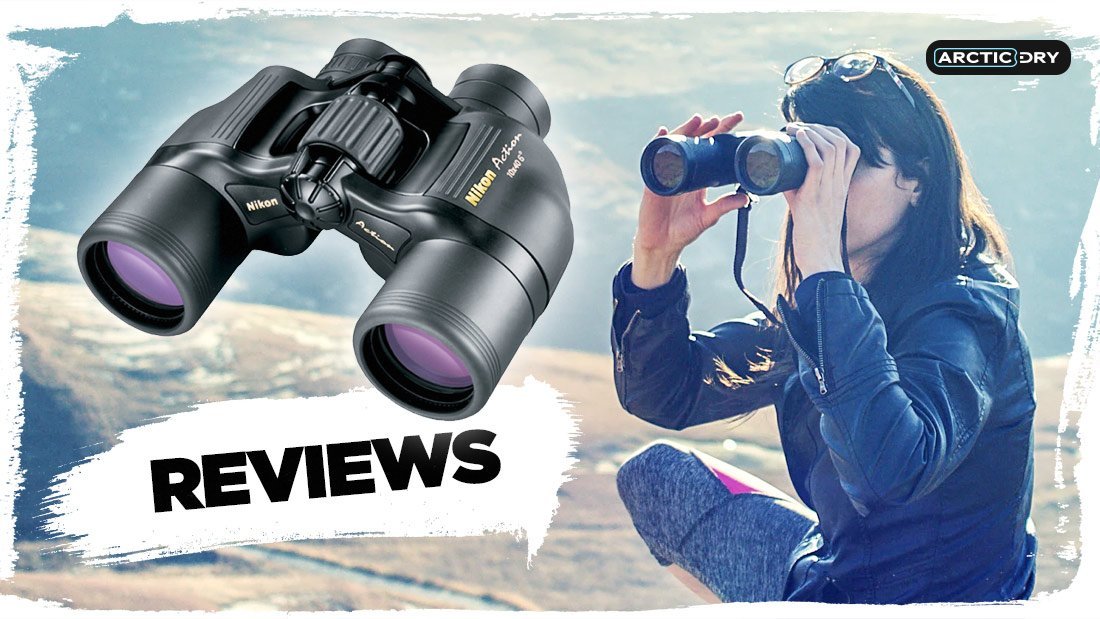
| Best binoculars for bird watching uk | Price | Rating | View |
|---|---|---|---|
| Nikon Aculon A30 10x25 Binoculars | £59.00 | 4.5 / 5 | View |
| Celestron 71406 TrailSeeker 10 x 42 Binocular | £169.00 | 4.5 / 5 | View |
| Steiner Wildlife XP 8x24 Binoculars | £186.99 | 4.5 / 5 | View |
| Nikon Monarch 7 8X42 DCF Binoculars | £459 | 4 / 5 | View |
| Nikon Prostaff 7S 8x42 Binocular | £179 | 4 / 5 | View |
| Nikon Monarch HG 10 x 42 Binoculars | £949 | 4.5 / 5 | View |
| Steiner Safari UltraSharp 10x26 binoculars | £99 | 4.5 / 5 | View |
| Nikon EDG 7x42 Black binocular | £715 | 5 / 5 | View |
| Canon 10X32 IS Binoculars | £706.99 | 5 / 5 | View |
| Swarovski 8.5 x 42 Field Pro EL Swarovison binoculars | £1,649.00 | 4.5/5 | View |
Nikon Aculon A30 10×25
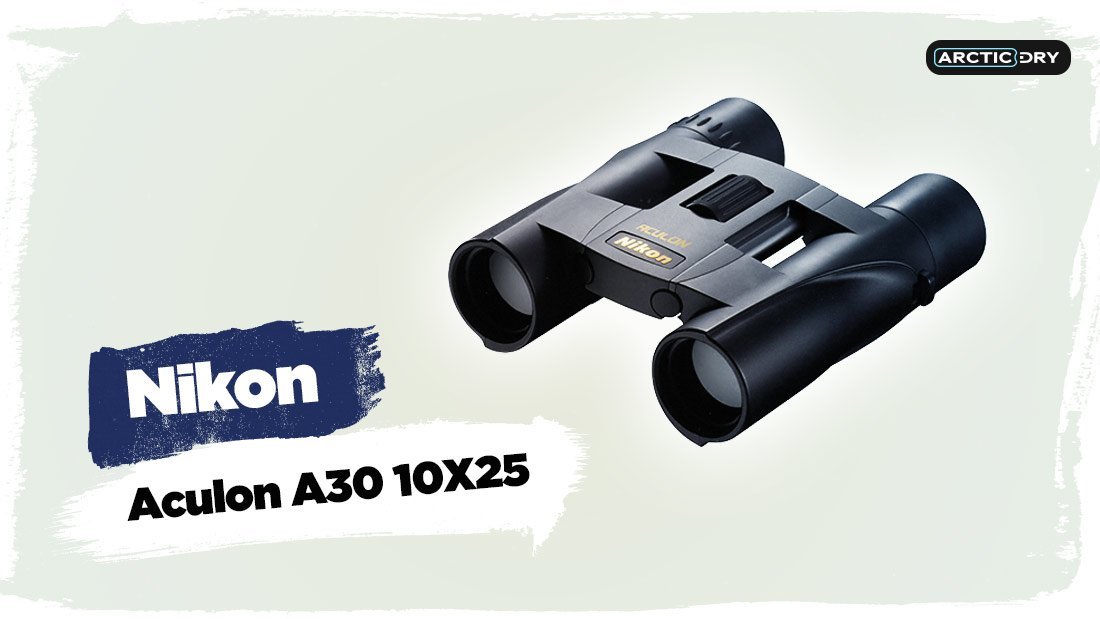
The Aculon A30 from Nikon is probably one of the best binoculars for bird watching UK you can find under £100. It conveniently balances between portability and power by pairing a small lens diameter with a high magnification power. Despite its affordability, the images you get are clearer than you’d expect at this price range.
You can credit this to the multi-coated lens, which offers excellent image clarity and brightness compared to most of its rivals.
The Aculon is equipped with a 25mm lens that conveniently makes the weight of the binoculars manageable on a compact device that can effortlessly fit inside your pants pocket.
It also boasts a 10X magnification and a nice field of view to let you see distant objects without too much hassle. A single focusing ring is used to help you bring objects into focus, and this is stable and firm. It offers you precise control without being too rigid to trouble you when turning it.
You’ll also appreciate the stable construction of the A30. Although lightweight, it feels pretty sturdy and ergonomic in your palms.
The body is also sleek and can stay in your hands throughout a day-long expedition without getting uncomfortable.
The only asterisk on the Aculon A30 is that its objective lens does not have a cap, which exposes it to the risk of fogging. Other than that, it is a great bird watching gear for both rookie and experienced enthusiasts!
Pros
-
Quite affordable
-
High image quality and brightness
-
Lightweight and compact
-
Decent magnification
-
Great value for money
Cons
-
No objective lens cap
Celestron 71406 TrailSeeker 10 x 42 Binocular
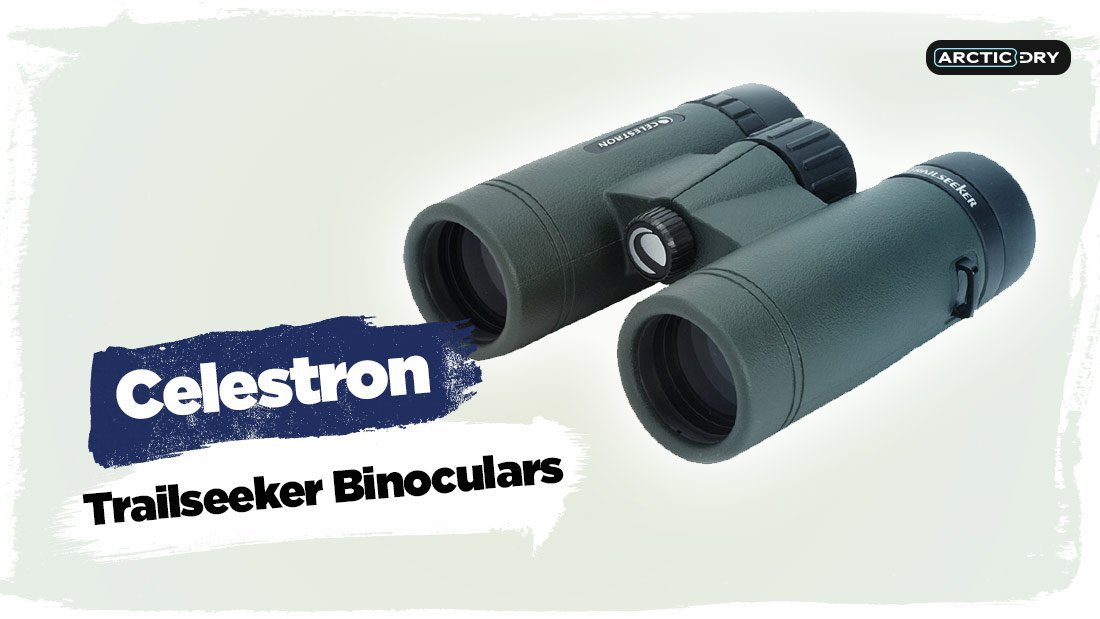
The Celestron Trailseeker has received praise from casual as well as veteran bird watchers thanks to its array of practical specs and is one of our favourites on this list of best binoculars for bird watching uk. These binoculars are endowed with a perfect mix of quality, performance, and weight, making them the choice device for bird watching!
The first thing to grab your attention on the Trailseeker 10×42 will be its strong and attractive build. Its outer shell is made out of a durable magnesium alloy that comes in handy in the rugged conditions of the outdoors. This still manages to keep the device conveniently lightweight for multi-day adventures.
You get a green rubber casing that not only enhances the grip when you hold the binoculars but also protects them from impact in case of any hits and bumps.
Another exciting feature is that it is waterproof, so you can continue watching your birds in the rain effortlessly when they are perched under a tree and not moving around.
For most bird watchers, the 10×42 magnification and lens diameter pairing is considered a sweet spot, and this is what allows the Trailseeker to shine as far as performance is concerned. You also get a generous field of focus to enable you to track distant birds even when they are flying fast.
You don’t have to worry about the image quality too!
The binoculars produce crystal clear images with just the right level of brightness.
The performance in lowly lit environments is also pretty decent and a far cry from what the cheaper brands in the market can offer. What you may not like, however, is that the object tends to get blurry, especially around the edge of your FOV.
As a consolation, the binoculars come with a nice carrying case and a comfortably padded strap, which will come in handy when you are on the go. Overall, the Celestron Trailseeker 10×42 is a unit that you can grow into. You won’t easily find binoculars that can match its great mix of specifications!
Pros
-
Perfect bird watching device
-
Durable alloy casing
-
Waterproof
-
10×42 magnification and lens diameter
Cons
-
Minor blurring of images around the edges
Steiner Wildlife XP 8×24 Binoculars

This set of binoculars has been built to cope with the toughest environments you can encounter during your bird-watching expeditions. It performs exquisitely on all kinds of conditions thanks to a durable polycarbonate Makrolon casing. This protects the unit from falls and bumps, which should be a relief for the clumsy handlers.
The Wildlife XP comes with high-definition optics that make it possible for the images to be crispy clear with full contrast for maximum resolution.
The slightly low 8X magnification allows for a wide 114m field of view. It is also waterproof and the lenses have been nitrogen-filled to prevent fogging.
Non-slip rubber armor protection on the outside has been used to resist acid, oil, and adverse weather. This also provides a great grip for better handling even in tough viewing angles.
You even get finger recesses to ensure you never drop your binoculars when you have gloves on.
Finally, the Steiner Wildlife XP binoculars are very portable and compact enough to fit inside the pocket of your pants. They are just what you need for that multiple day adventure in the depth of the wilderness.
Pros
-
Stable handling
-
Waterproof
-
Nitrogen filled to prevent fogging
-
Wide field of view
Cons
-
Eyecup doesn’t fit
Nikon Monarch 7
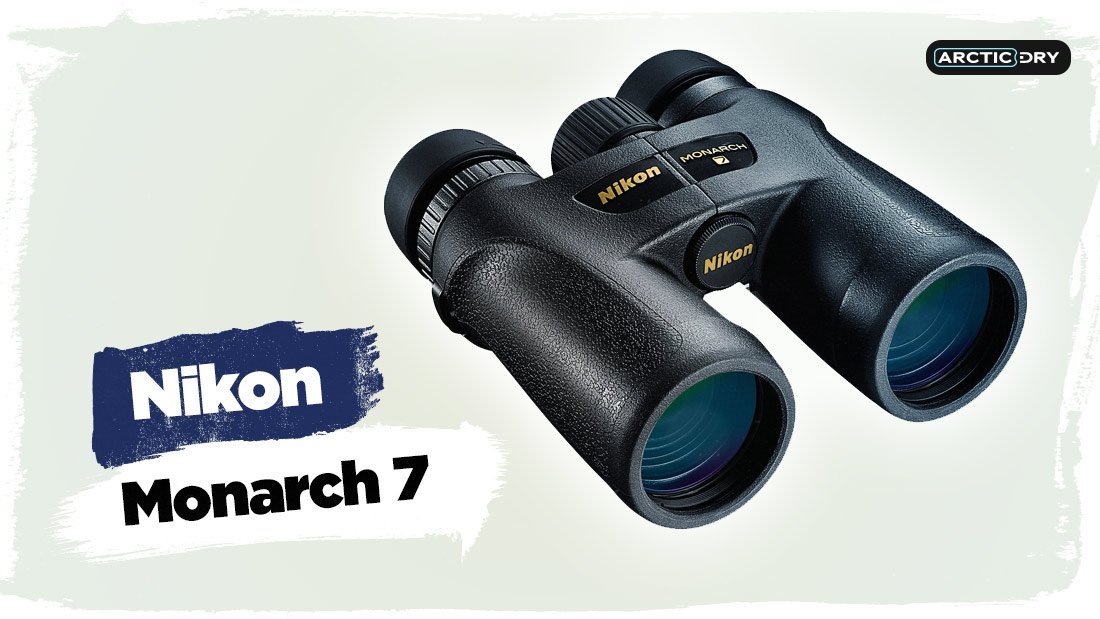
This is another high-end unit that you should not shy away from breaking the bank when you want excess quality from a pair of binoculars and one of my personal favourites in this list of best binoculars for bird watching uk.
The Nikon Monarch 7 comes with a solid build, and its smooth focus ring can be adjusted effortlessly using just one finger. It has a sculpted and rubbery body for an ergonomic feel when you hold the binoculars.
The grip is fantastic, and you will rarely mishandle or drop it while watching birds. For a pricey set like the Monarch 7, you can aptly expect it to be waterproof, which it is, plus the lens has been nitrogen filled to ensure there is no fogging. With its close focusing at 2.5mm, the standard is not quite what you get on the Trailseeker.
However, the Monarch 7 comes into its own in the image quality department.
These binoculars incorporate extra-low diversions (ED) glass while multi-coated internal prisms to produce incredibly bright and clear images.
The difference is night and day when compared to the Trailseeker, offering sharper details at the edges with deeply saturated colors.
The 8-degree FOV angle is not as wide as the Trailseeker’s, but it is still decent enough and this is further compensated by the sharper image reproduction at the edges. Furthermore, the 8X magnification pairs well with the 42mm lens diameter for a bird-watching pair of binoculars.
On the downside, you’ll notice purple fringing around the edge of some objects when the conditions are bright and against the blue sky. Other than that, these are solid binoculars with excellent value for money!
Pros
-
Superb image quality
-
ED lens
-
Nice and ergonomic feel
-
Water and fogproof
Cons
-
Pricey
-
Purple fringing in bright conditions
Nikon Prostaff 7S 8×42 Binoculars
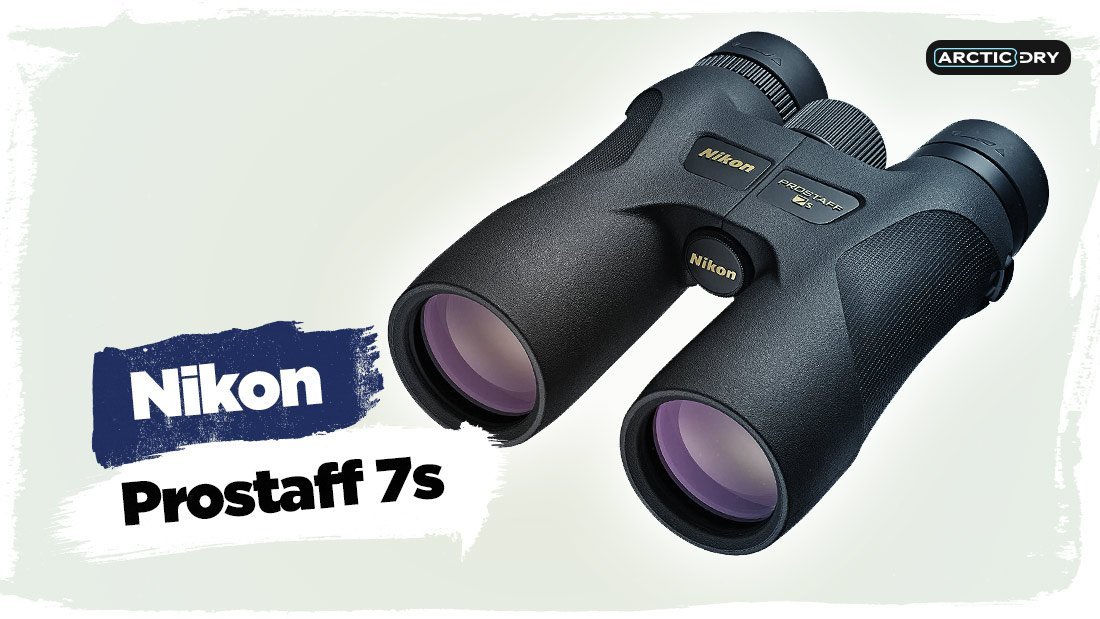
Nikon built on the success of their Prostaff binocular line to come with the 7S 8 X 42, a unit that was designed for unparalleled viewing comfort. The 7S comes equipped with a multilayer-coated eco-glass lens, as well as roof prism construction, which delivers simply superb image quality.
It uses a combination of 8X magnification and 42mm lens diameter to provide you with a generous field of view when focusing on objects. The images are sharp and well-detailed while color reproduction is exquisite. A phase-correction coating has been incorporated to make for high-resolution images at any magnification.
The small diameter lens allows the binoculars to remain lightweight and convenient for day-long bird-watching expeditions. It is, however, quite robust thanks to its fiberglass construction, which has been reinforced with polycarbonate resin to protect against shock. The rubber casing helps to enhance grip when holding the device and improved handling in different kinds of weather conditions.
These binoculars use turn-n-slide eyecups with multi-click adjustment points that make it easy for you to correctly position your eyes while viewing. They are waterproof up to 10 minutes in a 1-meter depth of water and the lens have been treated with nitrogen gas to keep fogging at bay.
Finally, the Nikon Prostaff 7S doesn’t come cheap; it will cost you around £300. However, it is a practical set of binoculars that will take your bird viewing experience to the next level.
Pros
-
High image quality
-
Waterproof and fogproof
-
Multilayer coated lenses
-
Durable outer casing
-
Easy to operate
Cons
-
Low quality protective caps
Nikon Monarch HG 10×30
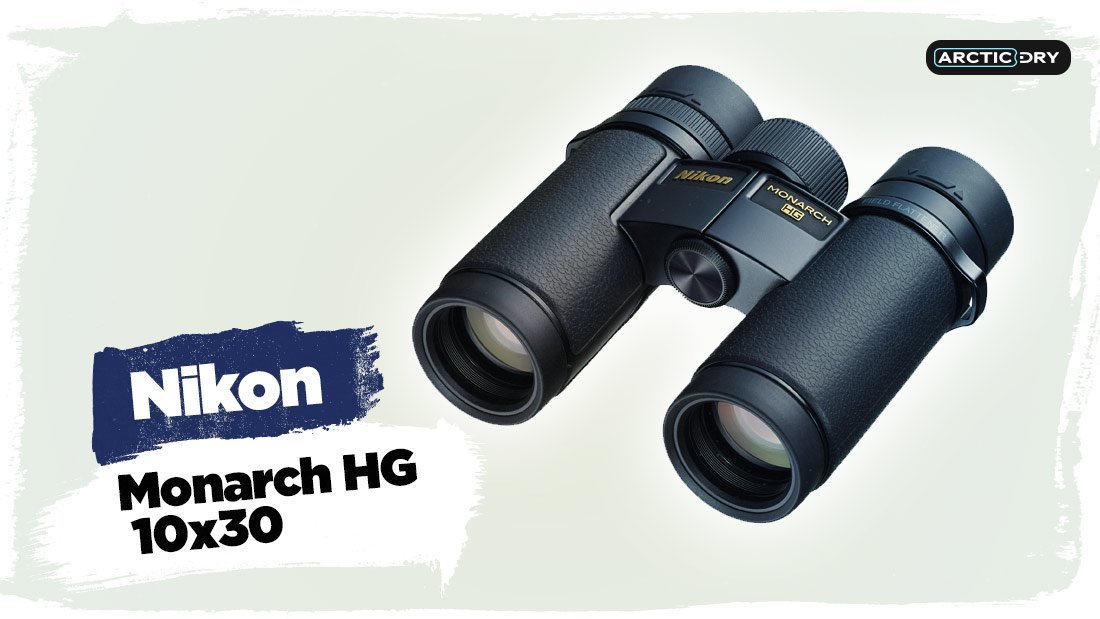
If you have a flexible budget and are willing to spend as much as you can on a top-quality bird watching device, the Nikon Monarch HG will make for a great option. These binoculars have a 10X magnification to go with a 30mm lens diameter, although you can also find it in an 8X30 combination.
The small lens diameter allows the Monarch HG to be conveniently compact and very portable at only 450g.
Despite its small size, the magnesium alloy outer is durable and resistant to impact or abrasion.
The binoculars are also waterproof and fog proof, so you can use them in all weather conditions.
The manufacturer mixes these specs to deliver a performance that is not different from the Monarch HG 42mm version; just in a more compact body. Extra-low dispersion glass on the lens helps to rectify chromatic aberration that may cause colour fringing whereas comfort in carrying the unit is made sure by the smooth neck strap.
As a bonus, you get a hard carrying-case when you buy the Monarch HG to make sure your expensive gadget is always protected when transporting. There’s even a tripod adaptor thrown in the package to guarantee that you’re getting top-quality gear. Overall, the Nikon Monarch HG has all the makings of the best binoculars for bird watching UK!
Pros
-
Waterproof and fogproof
-
Sturdy magnesium alloy build
-
Crystal clear images
-
Compact and portable
Cons
-
Quite costly
Steiner 2212 10x 26mm Safari UltraSharp Binocular
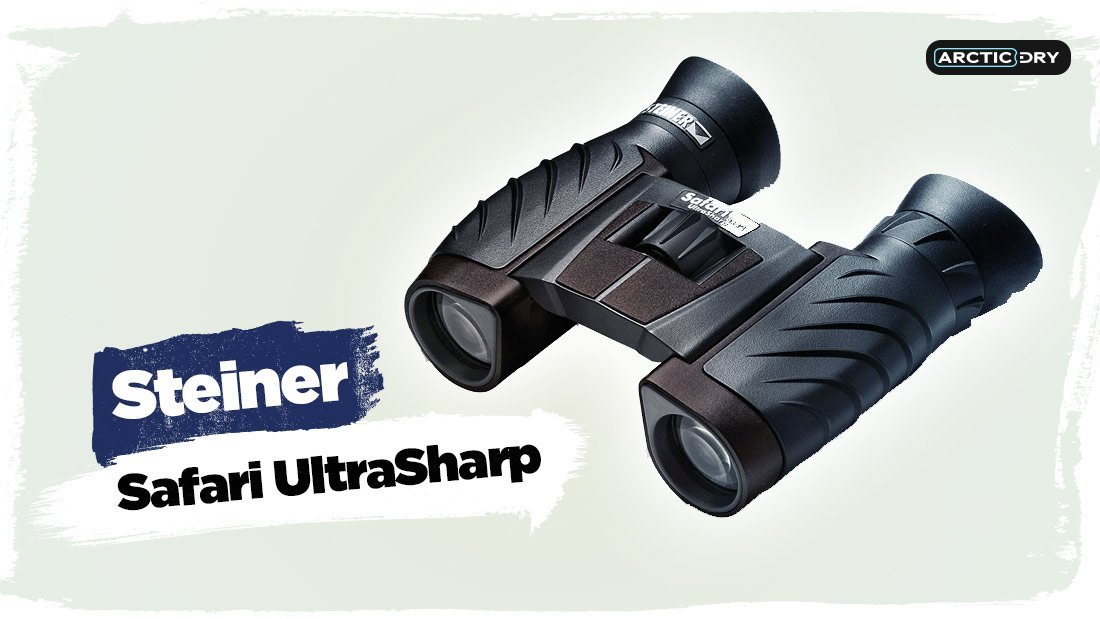
Aside from the 10X magnification, what will pull you to the Steiner 2212 10x 26mm Safari Ultrasharp binoculars is their lightweight build. Weighing just 297g, the unit is the lightest in this list and ensures that you can spend the whole day watching birds without getting tired of holding it. This is because of the small 26mm lens diameter.
Handling the Safari Ultrasharp has been made easy and enjoyable by the ergonomic grips while the intelligently laid-out controls make it user-friendly, especially for beginner birders.
The optical quality is also no slouch and produces clear and precise images. It may not be as good as the Canon binoculars, but it is very impressive at this range.
The unit is equipped with high-contrast optics to deliver exceptional image quality and there is an 11mm eye relief for those who wear glasses. Overall, this practical set of binoculars represent the best value for money at its price range, and will be a nice choice for rookie bird watchers!
Pros
-
Extremely lightweight
-
Generous 10X magnification
-
User-friendly
-
Great for beginners
Cons
-
No tripod connectivity
Nikon EDG 7×42 Binoculars
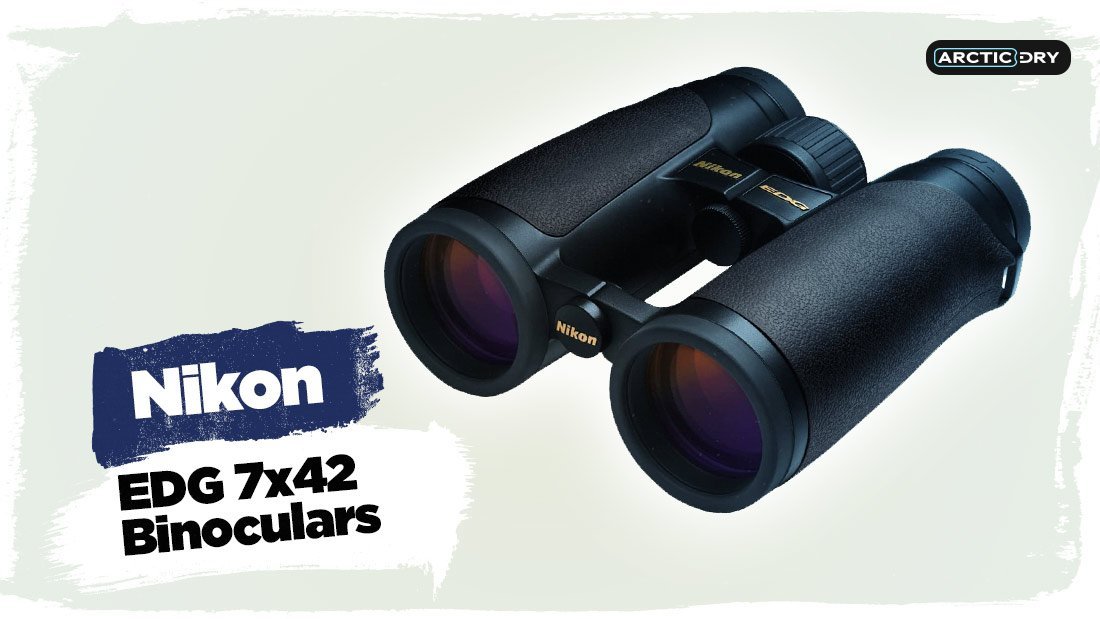
Although the 8X42 combination has gained popularity, the 7X42 on the Nikon EDG binoculars remain a classic bird-watching configuration for a number of reasons. Firstly, the relatively lower magnification power leaves you with a wide field of view and this is exactly what you get on the EDG.
At 419ft wide from 1000 yards, the FOV gives you a generous amount of details when focusing on objects.
The image reproduction also works great, even in low light conditions.
The 6mm exit pupil works far much better compared to the 5.2mm you get on the 8X42 version. Several optical components and coatings are used on the Nikon EDG to enhance the image quality.
The lenses are fully multicoated and come with Extra-low dispersion elements. Not to mention that they use a field flattener system to undermine field curvature. Furthermore, the lens prisms are phase-corrected and feature multilayer coatings of highly reflective dielectric material.
This ensures that the more light gets transmitted in the appropriate way, resulting in high-quality and bright images.
In the end, there is so much going on for the Nikon EDG 7×42 that you can try out for a unique bird viewing experience!
Pros
-
Wide field of view
-
High image quality
-
Eye relief
Cons
-
Expensive
Canon IS 10 x 32
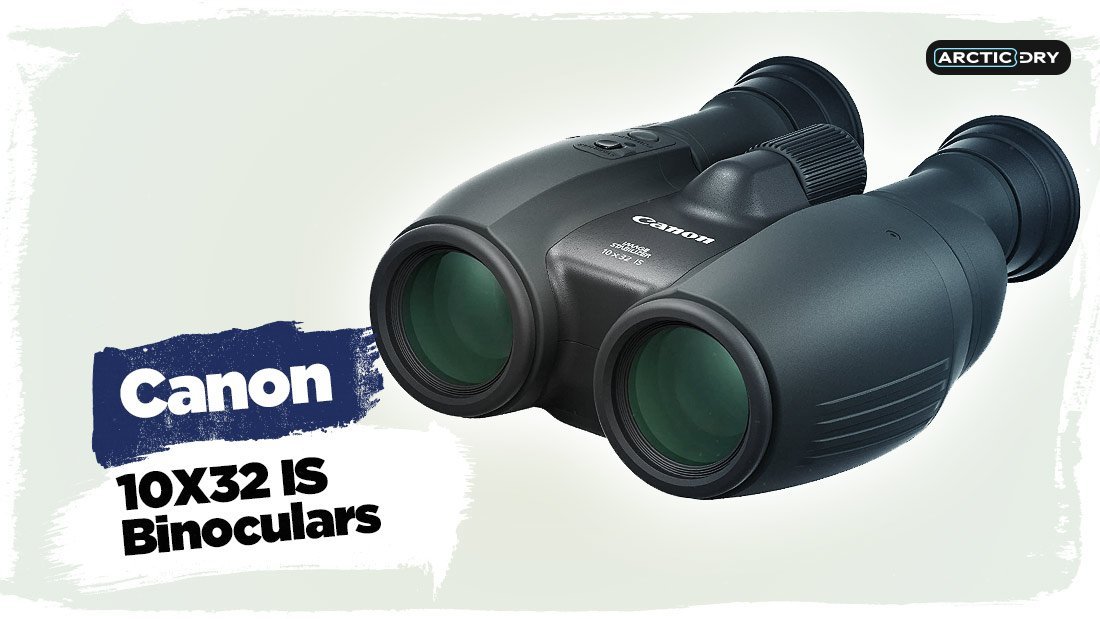
Canon is a brand that has made its reputation from the advanced image stabilisation technology applied to their digital camera. This is precisely what you can expect from their binoculars, and in this case, the Canon IS 10 X 32!
This technology works to fantastic effect on the IS 10 X 32, although you’ll need two AA batteries to get it to work. There is a stabilizer button on the right that you press, and all the shake disappears in an instant. The implication here is that bird watching becomes a smoother and more enjoyable affair, even for objects that are farther away.
Any experienced hobbyist will tell you that a 10X magnification requires steady hands to make it work in the field. However, the image stabilisation feature in these binoculars makes it work like clockwork.
You’ll be able to bring high magnification levels in the field without worrying about shaky images.
The IS has a 32mm lens diameter, which is small enough to cut down the weight of the unit, although it is generally weighty than most models in its range. Its 6-degree field of view also helps with the image output, which is crisp and accurate, with impressive color reproduction. The Super Spectra coated lens also does a great job of reducing glare.
All things considered; the Canon IS 10 X 32 offers a great bang for your buck! The image stabilization technology makes it a great option for bird watchers who tread in rugged terrains that only allow you to view the birds from a distance.
Pros
-
Image stabilization technology
-
Ergonomic to hold
-
Good magnification and lens diameter pairing
-
Super Spectra coated lens
Cons
-
A little bit heavy
Swarovski Field Pro EL 8.5×42

If you are a no-nonsense bird watcher looking for a top-of-the-line device to splash your money on, the Swarvoski Field Pro EL won’t disappoint you! This amazing unit mixes an impressive build quality with arguably the highest performance lenses you can find in the market.
The greatest selling point on the Field Pro EL is its image quality! You get incomparable clarity and color reproduction when you view objects through these binoculars. The objects appear almost the same through the lens as they would with your naked eye. But what’s even better is the 5.5X magnification.
The images are stunningly clear, even in low light environments, you might easily assume there is some sort of artificial brightening feature on the lens.
With such a high-grade lens on your binoculars, the negative impact is on the weight, and the Field Pro EL can be burdensome when you have to carry it all day long.
The binoculars also feature a maximum 8.5X magnification and the focus wheel glides effortlessly when you want to make adjustments. Thanks to a 20mm eye relief feature, the unit remains comfortable to use whether you are wearing glasses or not. You also get three separate eye-relief settings for a more customized bird watching experience.
The Field Pro EL is housed in a durable casing, which does a great job of shielding your precious investment against impact. Furthermore, it remains waterproof to a depth of up to 4 meters. The unit’s design is generally minimalist but elegant, and you won’t mind having it around your neck whenever you can!
While the price of the Swarovski Field Pro EL might cause you to cringe, the quality you get is well worth the cost. It is the perfect option for veteran birders looking for a top-shelf product in the market!
Pros
-
Incredible image quality
-
Comfortable feel
-
Durable build
-
Elegant and cute design
-
Waterproof
Cons
-
Expensive
-
Weighty
Conclusion
If you’re thinking of taking up bird watching as a new hobby, then you can’t afford to have just any other binoculars. You need to invest in a high-quality pair for the best experience in the field. The guide above recommends some of the best binoculars for bird watching uk edition that you should have on your priority list when you go searching for a unit. If you liked this article, please head over to our Hiking Gear section to check out plenty more hiking gear & equipment reviews.





